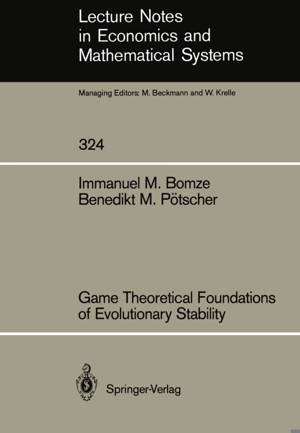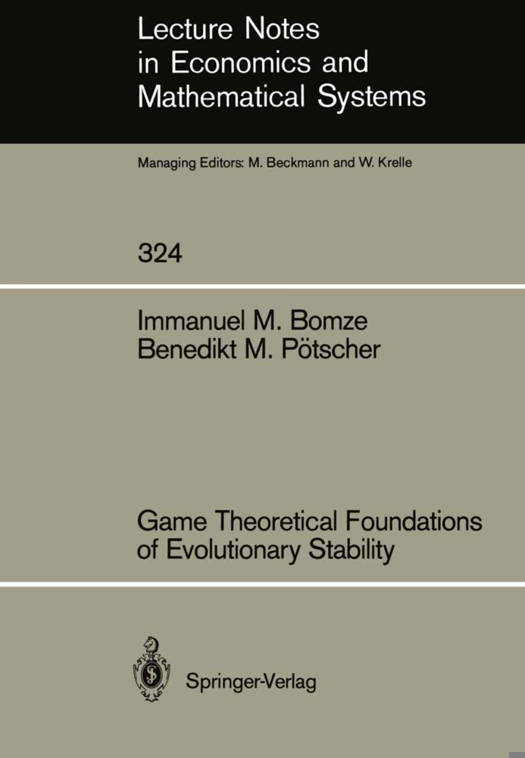
- Afhalen na 1 uur in een winkel met voorraad
- Gratis thuislevering in België vanaf € 30
- Ruim aanbod met 7 miljoen producten
- Afhalen na 1 uur in een winkel met voorraad
- Gratis thuislevering in België vanaf € 30
- Ruim aanbod met 7 miljoen producten
Zoeken
€ 52,95
+ 105 punten
Omschrijving
These Lecture Notes arose from discussions we had over a working paper written by the first author in fall 1987. We decided then to write a short paper about the basic structure of evolutionary stability and found ourselves ending up with a book manuscript. Parts of the material contained herein were presented in a seminar at the Department of Mathematics at the University of Vienna, as well as at a workshop on evolutionary game theory in Bielefeld. The final version of the manuscript has certainly benefitted from critical comments and suggestions by the participants of both the seminar and the workshop. Thanks are also due to S. Bomze-de Barba, R. Burger, G. Danninger, J. Hofbauer, R. Selten, K. Sigmund, G. Stiastny and F. Weising. The co-operation of W. Muller from Springer Verlag, Heidelberg, is gratefully acknowledged. Vienna, November 1988 Immanuel M. Bomze Benedikt M. Potscher III Contents 1. Introduction 1 2. Strategies and payoffs 5 2. 1. A general setting for evolutionary game theory 6 2. 2. Mixed strategies and population games 8 2. 3. Finite number of strategies . . . . . 13 2. 4. Infinitely many (pure) strategies 15 2. 5. Structured populations: asymmetric contests and multitype games 17 2. 6. Additional remarks . . . . . . . . . . . . . . . . . . . . . 21 3. Evolutionary stability 25 3. 1. Definition of evolutionary stability 25 3. 2. Evolutionary stability and solution concepts in classical game theory 30 3. 3. Conditions for evolutionary stability based on the normal cone 31 3. 4.
Specificaties
Betrokkenen
- Auteur(s):
- Uitgeverij:
Inhoud
- Aantal bladzijden:
- 145
- Taal:
- Engels
- Reeks:
- Reeksnummer:
- nr. 324
Eigenschappen
- Productcode (EAN):
- 9783540507666
- Verschijningsdatum:
- 22/02/1989
- Uitvoering:
- Paperback
- Formaat:
- Trade paperback (VS)
- Afmetingen:
- 170 mm x 244 mm
- Gewicht:
- 263 g

Alleen bij Standaard Boekhandel
+ 105 punten op je klantenkaart van Standaard Boekhandel
Beoordelingen
We publiceren alleen reviews die voldoen aan de voorwaarden voor reviews. Bekijk onze voorwaarden voor reviews.











